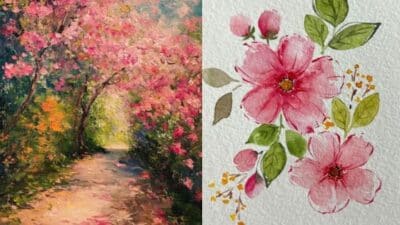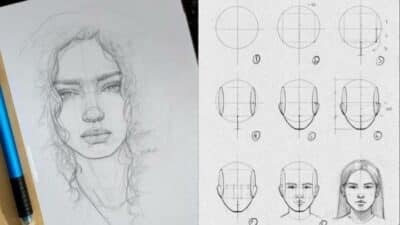Learning to draw the human figure is key for anyone interested in fashion illustration. It helps artists create clothes that fit well and look natural on a body. Understanding proportions means knowing how different parts of the body relate in size to each other, so drawings look balanced and realistic.
This skill can feel tricky at first, but with clear steps and practice, it becomes easier. Fashion illustrations often use stylized proportions, but they still follow basic rules to keep the figure believable. Getting the hang of these rules helps artists design better and clearer fashion sketches.
By focusing on proportions, anyone can improve their ability to draw poses and outfits that show how clothes move and fit. This makes the whole process of designing more fun and effective.
Understanding Proportions in Fashion Illustration
Learning to draw the human figure for fashion means knowing the right size and length of body parts. This helps create designs that look balanced and stylish. It also means understanding how fashion figures differ from real-life bodies in size and shape.
The Importance of Correct Proportions
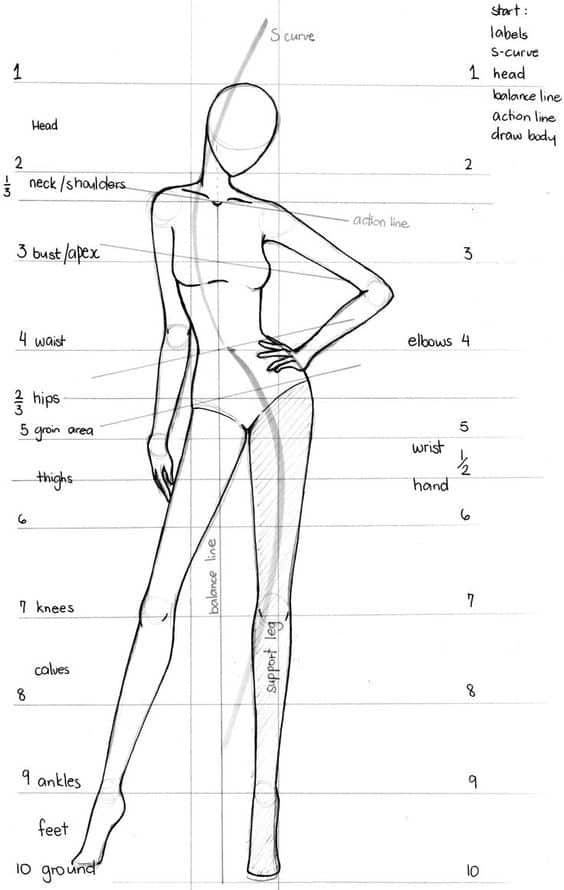
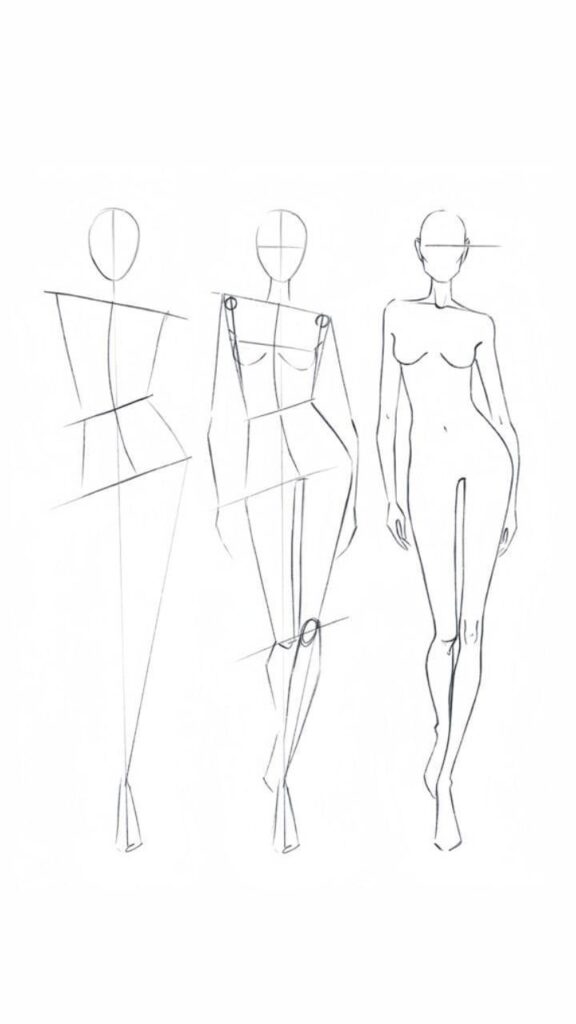
Correct proportions are key to making fashion drawings believable. They help show how clothes fit and move on the body. Without good proportions, designs may look awkward or unrealistic.
Accurate proportions also guide where details like seams and buttons should go. This makes the design easier to understand for anyone creating the clothes. It also helps designers avoid mistakes when turning sketches into real garments.
Common Fashion Figure Ratios
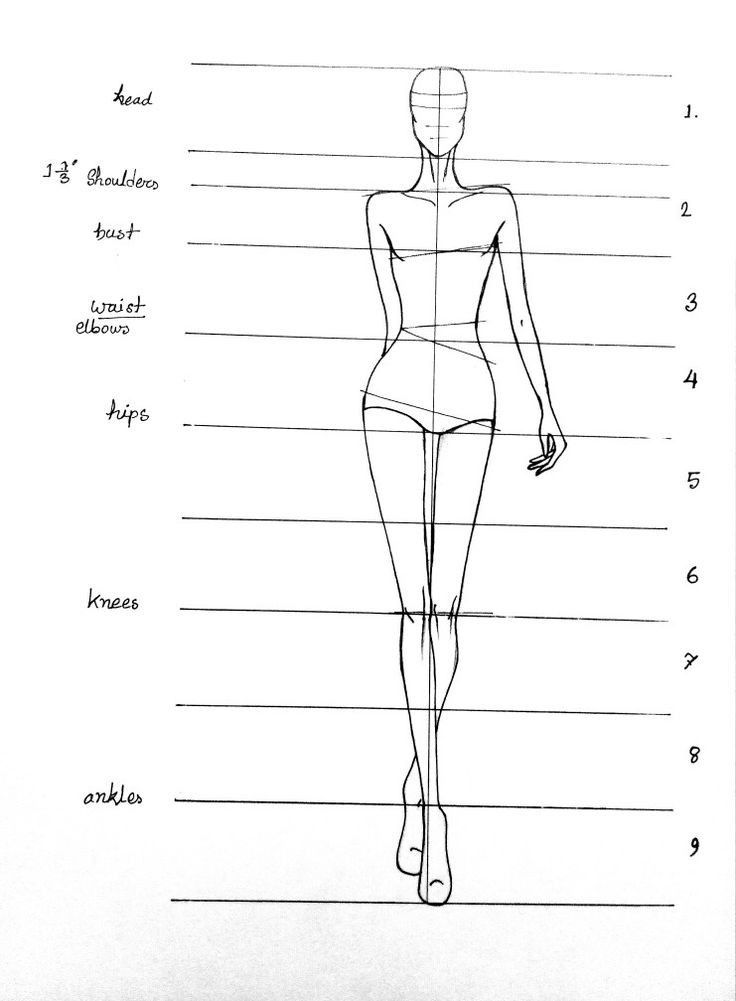
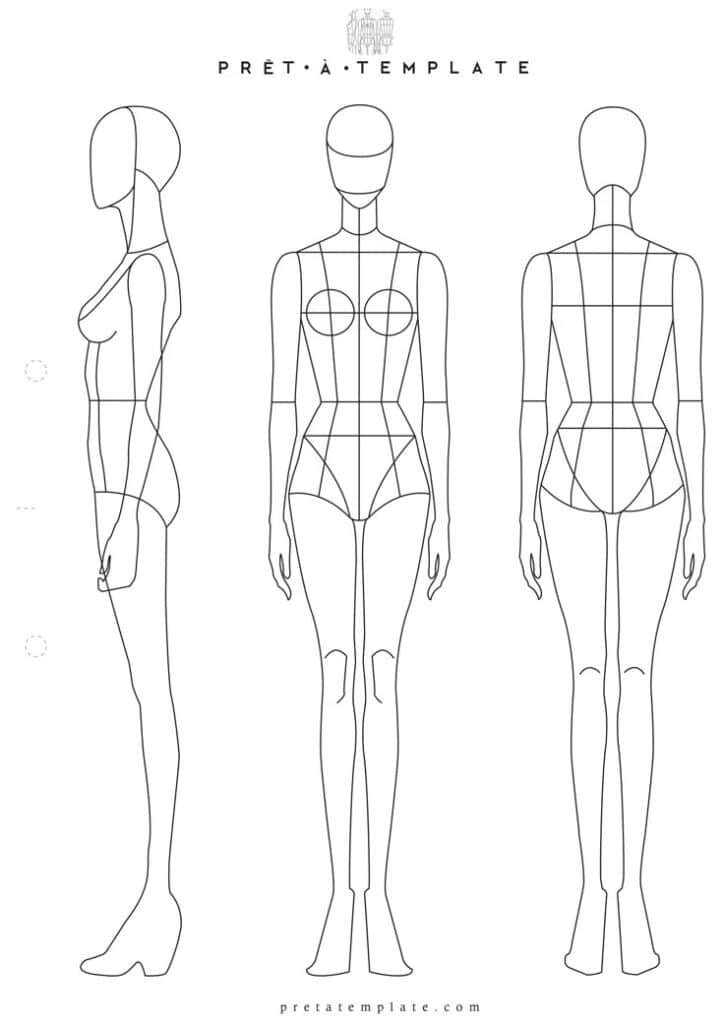
Fashion figures often follow a ratio of 9 heads tall. This means the height of the figure equals the length of nine head units stacked vertically. The average person is about 7.5 heads tall, so this ratio makes figures look longer and leaner.
Here is a simple breakdown:
| Body Part | Number of Heads Tall |
|---|---|
| Head | 1 |
| Torso to waist | 2-3 |
| Waist to knees | 3-5 |
| Knees to feet | 6-9 |
Using these proportions helps create a stylish, elongated look that highlights the clothing.
Differences Between Fashion and Realistic Proportions
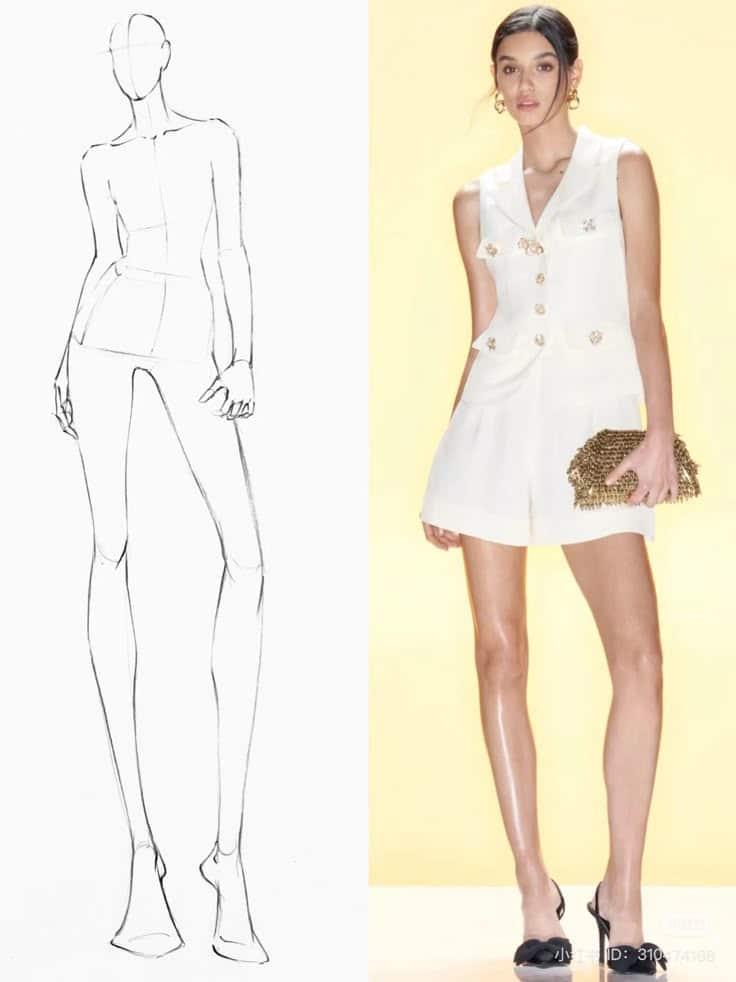
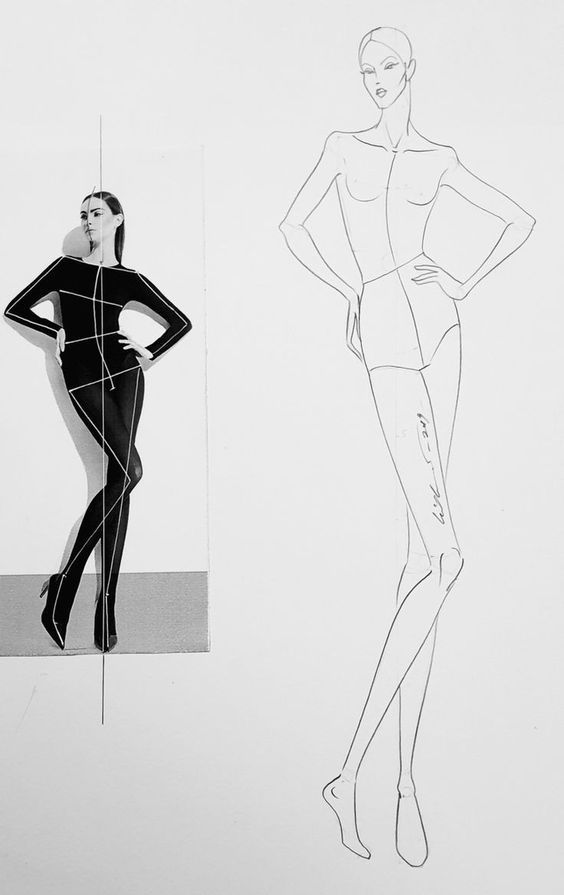
Fashion illustrations exaggerate body parts to emphasize style. Figures are taller, slimmer, and have longer legs than normal people. This creates a dramatic effect but is not a true reflection of everyday bodies.
Realistic proportions stick closer to how most people look, usually around 7 to 7.5 heads tall. Fashion drawings stretch bodies to draw attention to garments and create a more dynamic pose.
The choice depends on the illustrator’s goal. For fashion, exaggerated proportions work best to show off the clothes clearly and beautifully.
Drawing the Human Figure for Fashion
Fashion figures need to be stylish and balanced. The process involves building the figure step by step, setting a clear pose, and using guidelines to keep proportions correct.
Step-by-Step Construction of the Fashion Figure
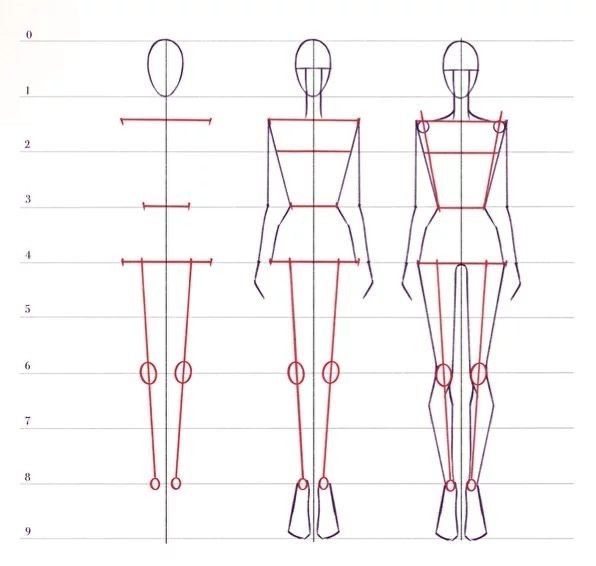
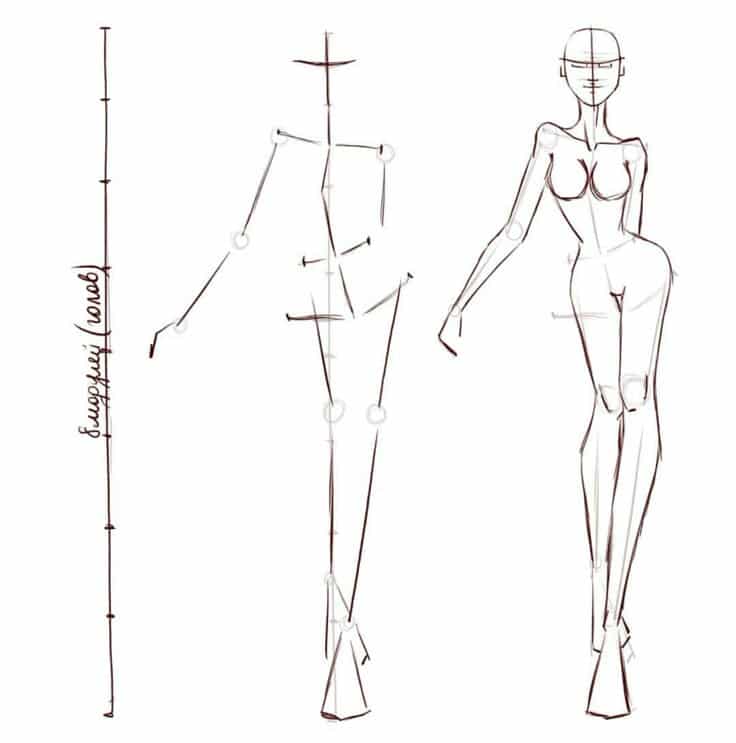
First, the artist starts with a basic skeleton called a “gesture line” to capture movement. Then, simple shapes like ovals and rectangles form the torso, hips, and limbs.
The figure usually is drawn taller than a real person—about 9 heads tall instead of 7.5. This elongation creates a sleek look that suits fashion sketches.
Next, the artist refines shapes and adds curves to show femininity or strength. The hands, feet, and neck are smaller but must be drawn carefully as they impact the figure’s balance.
Establishing the Figure’s Pose and Silhouette
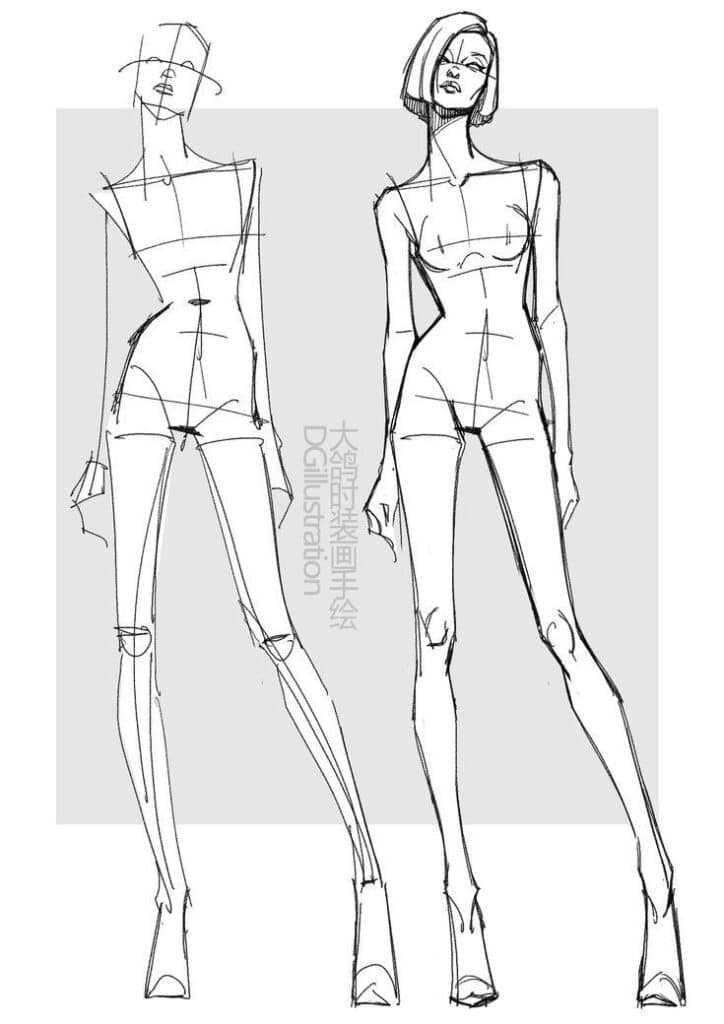
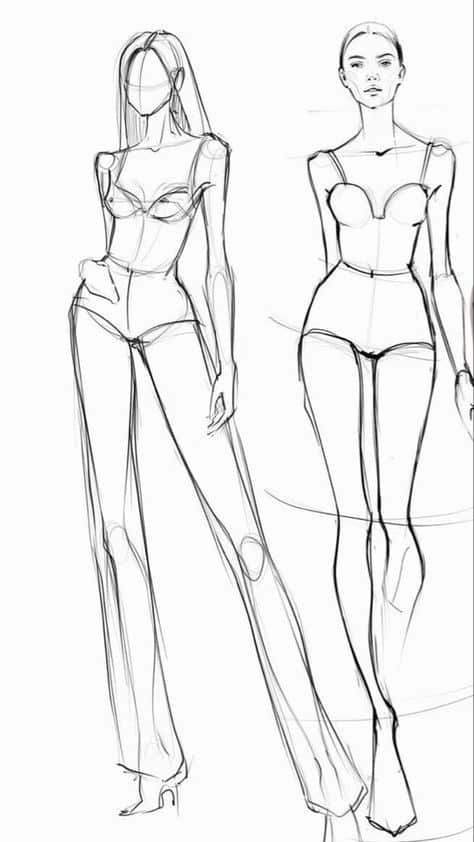
The pose shows the model’s attitude and clothing flow. It can be dynamic, with a twist or a bend, or calm and straight.
The silhouette is the overall outline of the figure. It should be smooth and clear. A good silhouette makes the clothing stand out and the figure easy to read.
Using light lines helps adjust the pose before firming up the drawing. The figure’s weight is balanced by positioning feet and hips correctly.
Mapping Proportions With Guidelines
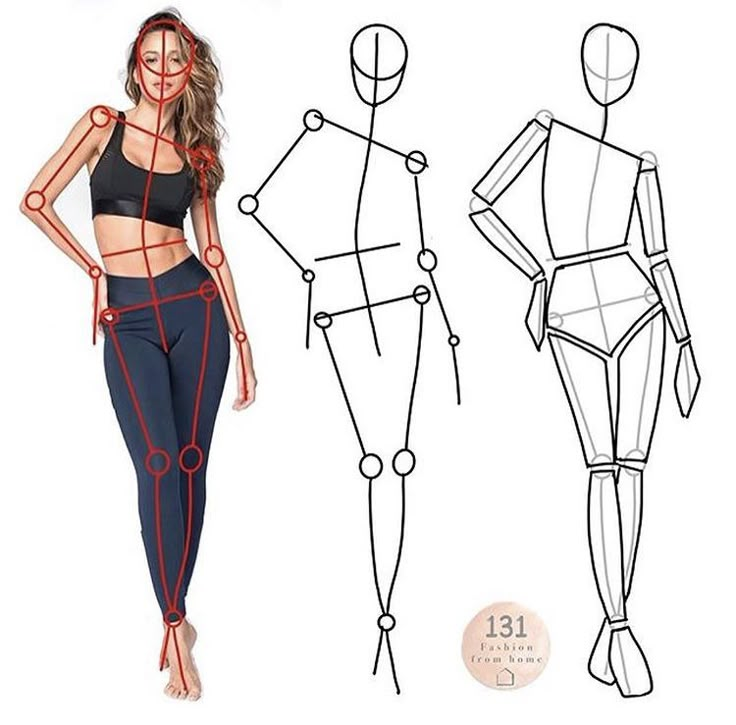
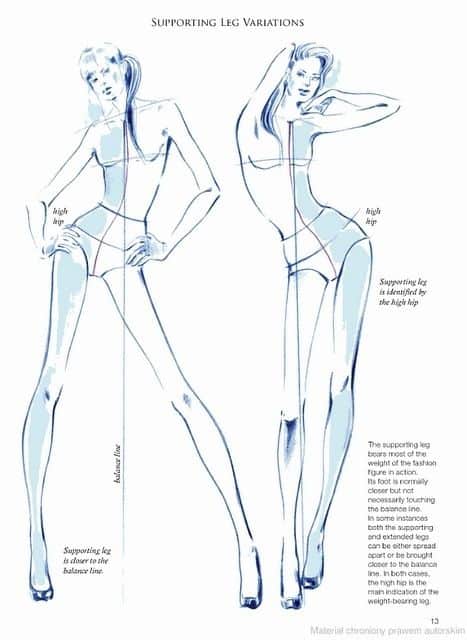
Guidelines divide the figure into parts to keep everything in order. A common way is to split the height into nine equal parts, or “heads.”
These lines mark key points like the chin, chest, waist, hips, knees, and ankles. They guide where each body part goes.
Artists draw horizontal lines across the figure to keep shoulders and hips level. Vertical center lines help for symmetry and posture.
Using guidelines helps maintain consistency, especially when drawing multiple figures or different poses.
Refining Your Fashion Illustration Techniques
Improving fashion drawings means focusing on small but important details and trying out new ways to show the figure’s movement. These steps help make the drawings more interesting and lively.
Adding Stylized Details to the Figure
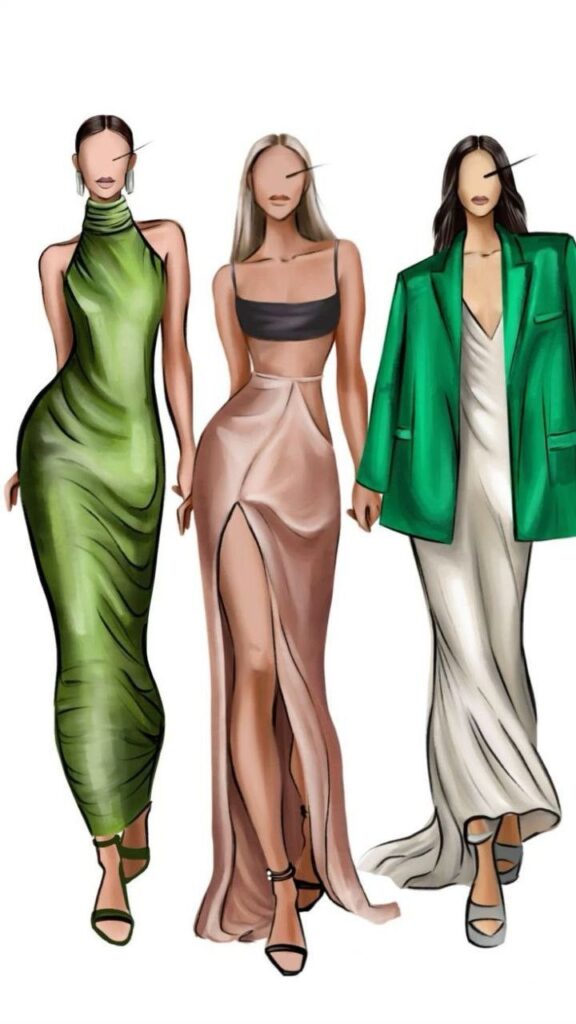
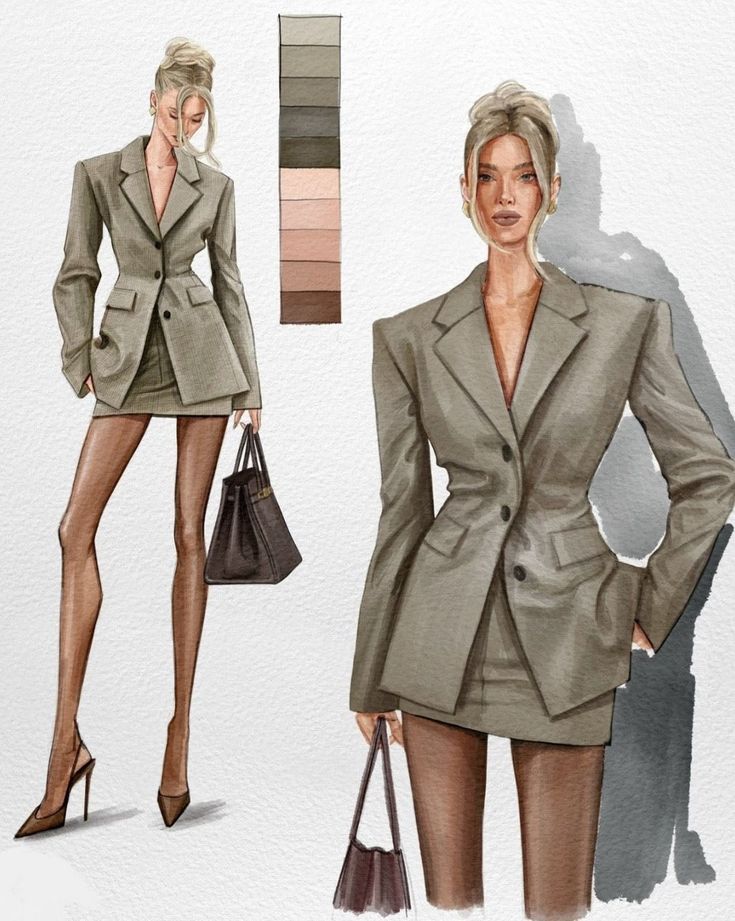
Stylized details highlight the unique look of a fashion illustration. Instead of drawing everything exactly as it is, the artist can change features to make the figure look taller or more elegant.
For example, elongating the legs or neck creates a sleek, graceful feel. Clothing folds and textures should also be added carefully. Small touches like sharp collars, flowing fabric, or exaggerated ruffles catch the eye.
Using clean lines for hair and facial features keeps focus on the outfit. Accessories like belts, hats, or jewelry should support the outfit without overwhelming the sketch. Balance is key to maintain style without clutter.
Experimenting With Dynamic Poses
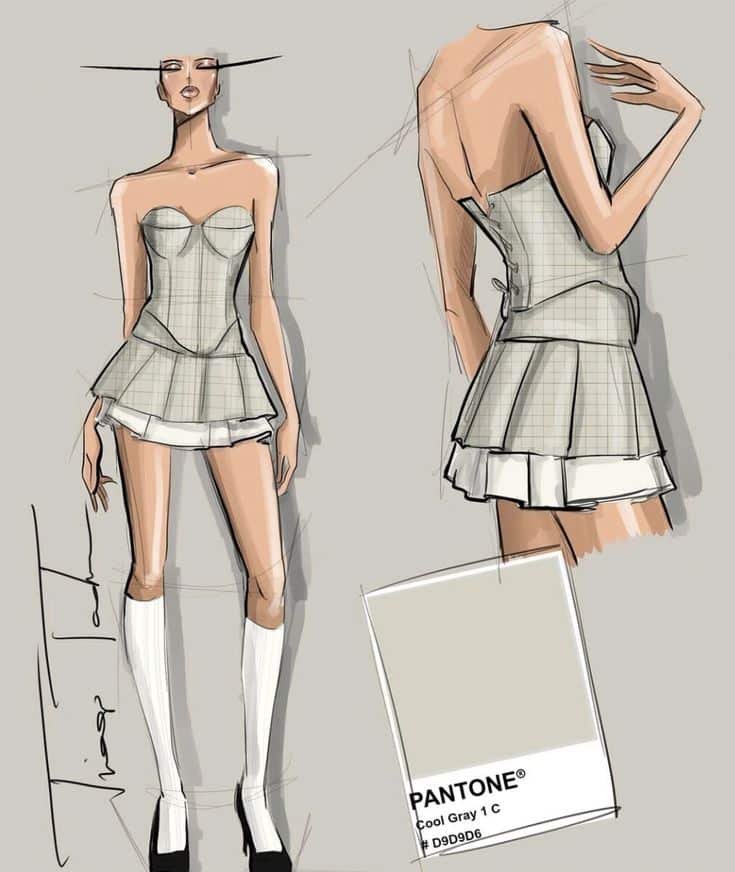
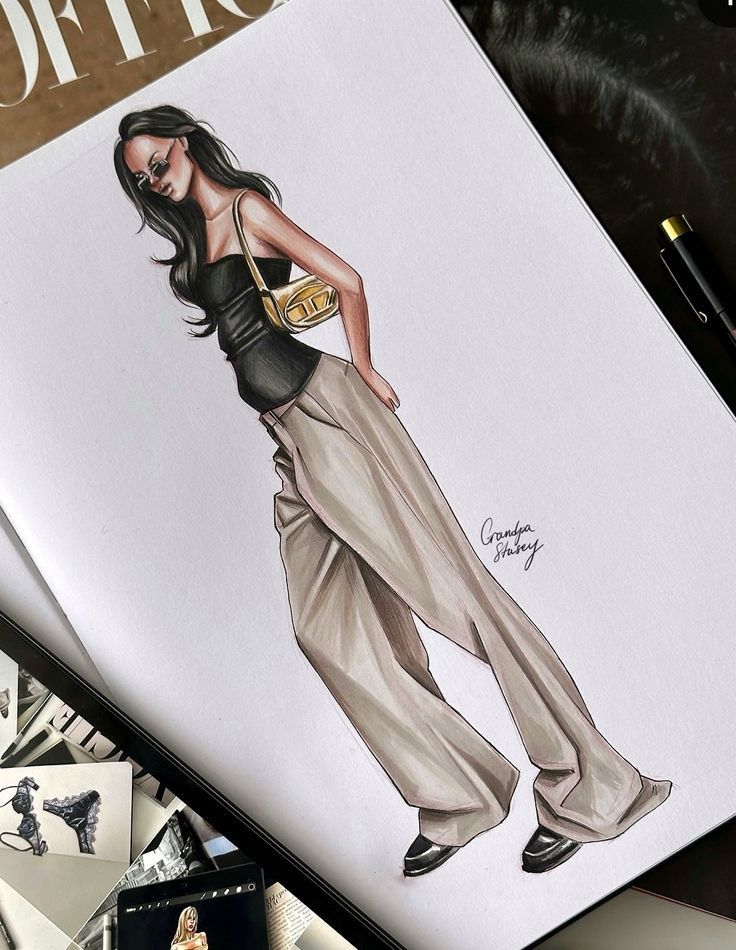
Dynamic poses bring energy to fashion sketches. Instead of standing straight, the figure can lean, twist, or walk. This shows how the clothes move and fit in real life.
Artists start by drawing simple lines called gesture lines to capture motion quickly. Then they add body shapes, keeping proportions right. Poses like a hand on the hip or a step forward add life and personality.
Trying different angles, like side views or a three-quarter turn, can help show the clothes from many perspectives. This makes the designs clearer for others to understand.
- 1.2Kshares
- Facebook0
- Pinterest1.2K
- Twitter0
